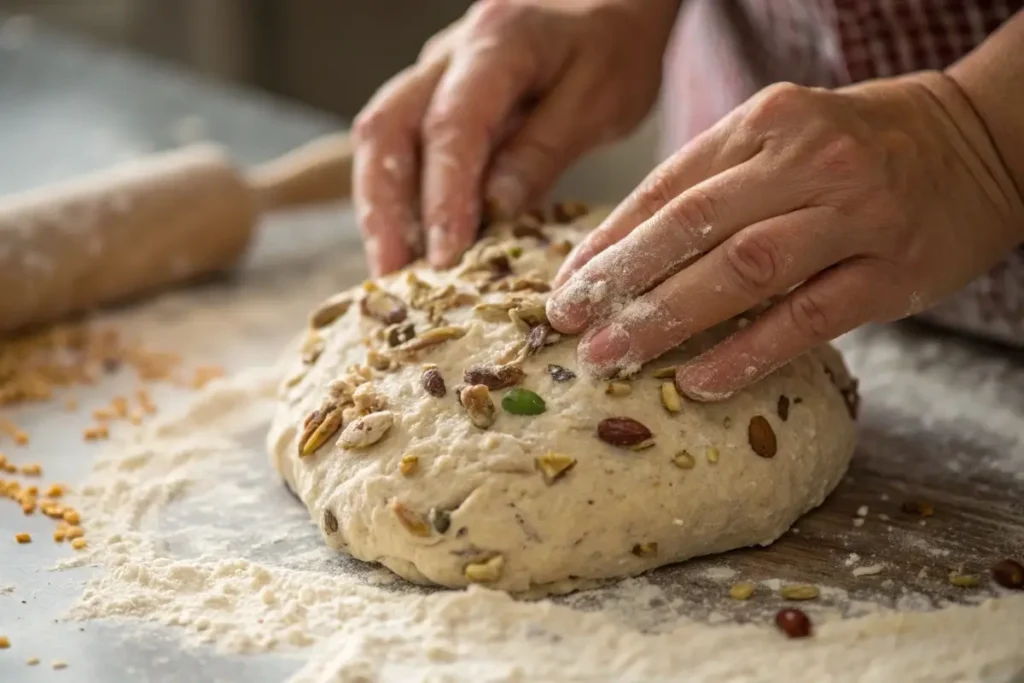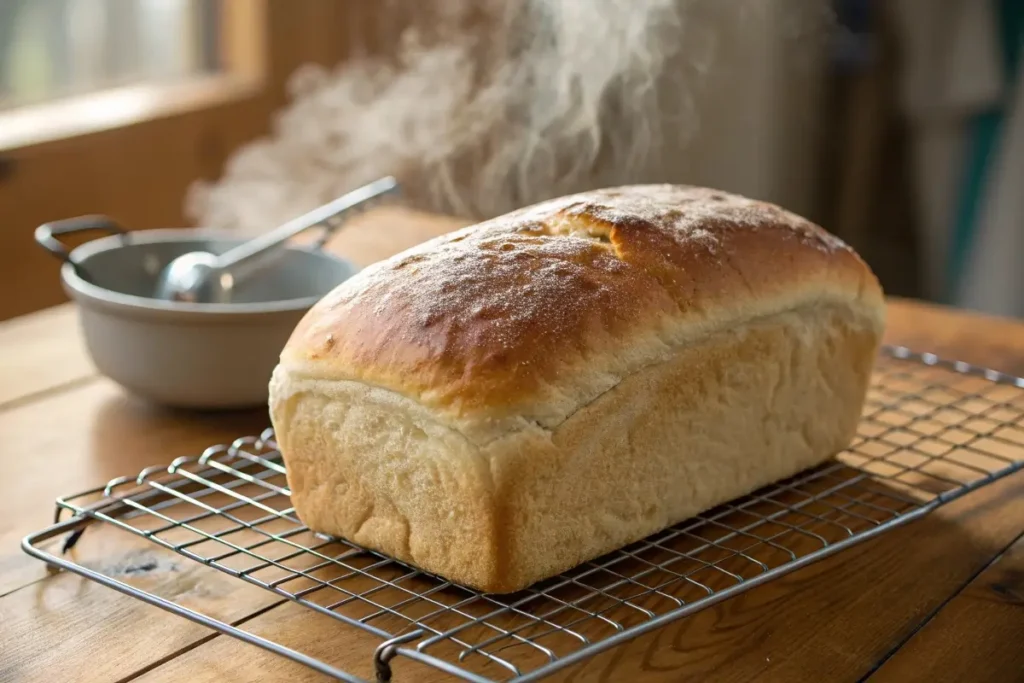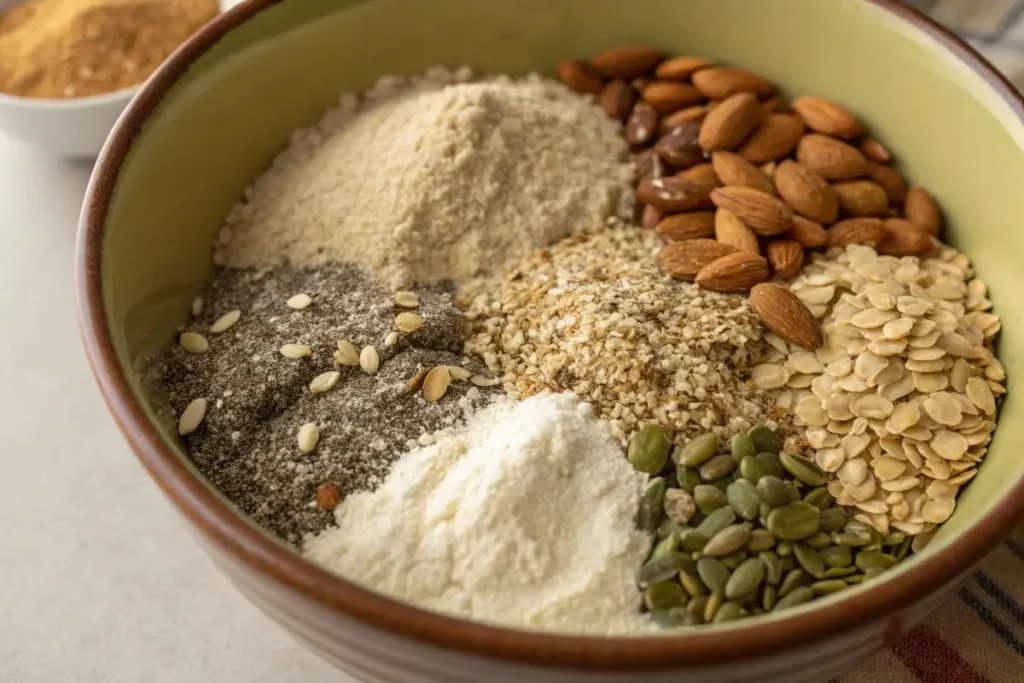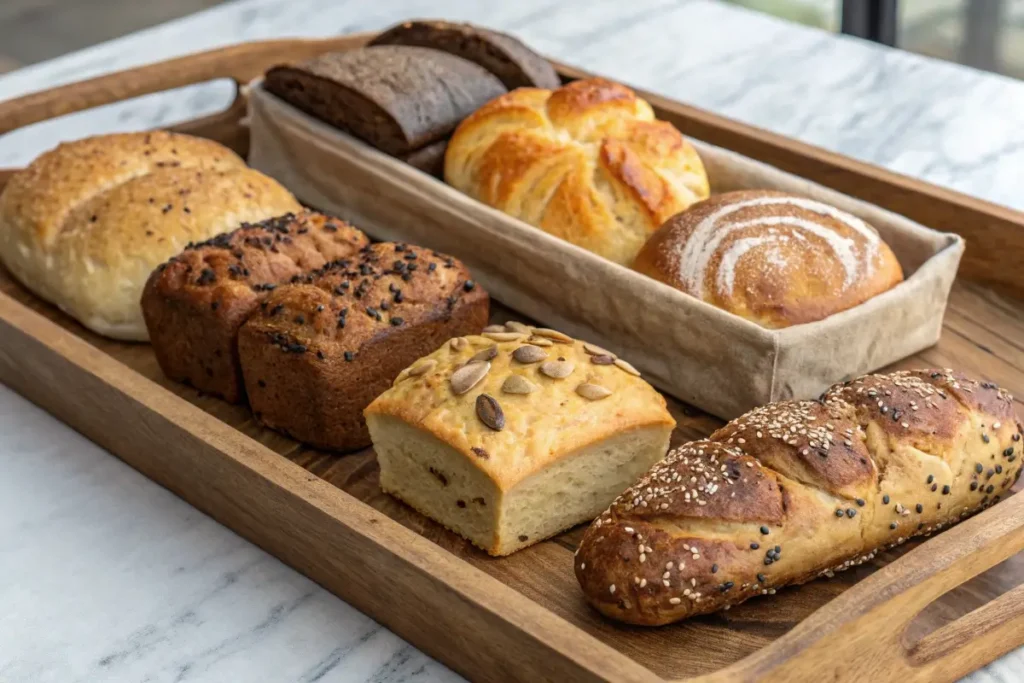Introduction
If you’re asking yourself “What bread has the most protein?” , you’re not alone. Many people are turning to high-protein diets to support muscle growth, weight management, and overall health. While traditional white and whole wheat breads offer some nutritional benefits, they often fall short in the protein department. Fortunately, there are several types of bread that deliver impressive amounts of protein, making them ideal for those seeking healthier options. In this comprehensive guide, we’ll explore the best high-protein breads, their nutritional profiles, and even provide a recipe for making your own protein-packed loaf at home.
Types of Bread with the Most Protein
When it comes to finding bread with the highest protein content, certain varieties stand out. Here’s a breakdown of the top contenders:
1. Ezekiel Bread
Ezekiel bread is made from sprouted grains and legumes, including wheat, barley, lentils, millet, and spelt. This combination provides a complete amino acid profile, making it an excellent source of plant-based protein. Each slice contains about 4 grams of protein, making it one of the richest options available.
2. Sourdough Bread
While sourdough isn’t traditionally known for its protein content, certain artisanal versions incorporate seeds like flax, chia, or sunflower, boosting their protein levels. Additionally, the fermentation process enhances digestibility, allowing your body to absorb nutrients more effectively.
3. Oat Bread
Oats are naturally high in protein and fiber, making oat bread a nutritious choice. Look for loaves that list oats as one of the primary ingredients to ensure maximum protein intake.
4. Rye Bread
Rye bread contains more protein than standard white or whole wheat bread, with approximately 3-5 grams per slice. It also boasts a lower glycemic index, making it a great option for those monitoring blood sugar levels.
5. Seed-Based Bread
Bread enriched with seeds such as sesame, pumpkin, or hemp can significantly increase its protein content. These seeds contribute essential fatty acids and amino acids, enhancing both flavor and nutrition.
Why Choose High-Protein Bread?
Protein plays a critical role in maintaining muscle mass, supporting immune function, and promoting satiety. Incorporating high-protein bread into your diet offers numerous benefits, including:
- Weight Management : Protein helps keep you full longer, reducing cravings and overeating.
- Muscle Support : Adequate protein intake supports muscle repair and growth, especially after exercise.
- Energy Boost : High-protein foods provide sustained energy throughout the day.
Joke Time: Why did the bread break up with the butter? Because it wanted to stay lean and mean!
Nutrition Comparison Table
Here’s a quick comparison of the protein content in popular bread types:
| Bread Type | Protein per Slice (g) | Key Ingredients |
|---|---|---|
| Ezekiel Bread | 4 | Sprouted grains, legumes |
| Sourdough Bread | 3-5 | Wheat flour, seeds (optional) |
| Oat Bread | 3-4 | Whole oats |
| Rye Bread | 3-5 | Rye flour |
| Seed-Based Bread | 5+ | Seeds (sesame, pumpkin, etc.) |
How to Make Your Own High-Protein Bread
Ready to bake your own protein-packed bread? Follow this easy recipe to create a delicious and nutritious loaf.
Prep Time: 15 minutes
Cook Time: 40 minutes
Total Time: 55 minutes
Yield: 1 loaf
Type of Dish: Breakfast/Snack
Cuisine: American
Ingredients
| Ingredient | Quantity |
|---|---|
| Whole wheat flour | 2 cups |
| Almond flour | 1 cup |
| Eggs | 2 |
| Honey | 2 tbsp |
| Milk | 1/2 cup |
| Active dry yeast | 2 1/4 tsp |
| Warm water | 1/2 cup |
| Salt | 1 tsp |
| Chia seeds | 2 tbsp |
| Flaxseeds | 2 tbsp |
Instructions
- Activate the Yeast
In a small bowl, dissolve the active dry yeast in warm water. Let it sit for 5-10 minutes until frothy. - Mix Dry Ingredients
In a large mixing bowl, combine the whole wheat flour, almond flour, salt, chia seeds, and flaxseeds. - Combine Wet Ingredients
In another bowl, whisk together the eggs, honey, and milk. Add the activated yeast mixture to this bowl and stir well. - Form the Dough
Gradually add the wet ingredients to the dry ingredients, mixing until a dough forms. Knead the dough on a lightly floured surface for 5-7 minutes. - Let It Rise
Place the dough in a greased bowl, cover with a damp cloth, and let it rise in a warm area for 30-40 minutes. - Bake the Bread
Preheat your oven to 375°F (190°C). Shape the dough into a loaf and place it in a greased bread pan. Bake for 40 minutes, or until golden brown.

Nutrition Facts
Here’s a breakdown of the nutritional content per serving (1 slice):
| Nutrient | Amount per Serving |
|---|---|
| Calories | 120 kcal |
| Total Fat | 3 g |
| Saturated Fat | 0.5 g |
| Cholesterol | 30 mg |
| Sodium | 100 mg |
| Total Carbohydrates | 18 g |
| Dietary Fiber | 4 g |
| Sugars | 3 g |
| Protein | 5 g |
Tips for Maximizing Protein Intake
To get the most out of your high-protein bread, consider these tips:
- Pair with Protein-Rich Spreads : Use peanut butter, almond butter, or hummus instead of jam or butter.
- Add Toppings : Top your bread with sliced turkey, avocado, or boiled eggs for extra protein.
- Experiment with Recipes : Try incorporating high-protein bread into sandwiches, toast, or French toast recipes.
Creative Ways to Use High-Protein Bread
High-protein bread isn’t just limited to breakfast or snacks. Here are some creative ideas to incorporate it into your meals:
- Grilled Cheese Sandwich : Use high-protein bread for a guilt-free grilled cheese experience.
- French Toast : Coat slices in egg batter and cook until golden for a decadent brunch option.
- Croutons : Cube leftover bread and bake until crispy for salads or soups.

The Science Behind Protein in Bread
Understanding how protein is incorporated into bread can help you make informed choices about your dietary needs. Bread typically derives its protein from the grains or flours used in its preparation. However, certain additives and alternative ingredients can significantly boost the protein content.
Grains as Protein Powerhouses
Grains like wheat, rye, barley, and oats naturally contain varying levels of protein. For example, whole wheat flour contains approximately 13 grams of protein per 100 grams, while oats offer around 17 grams. When combined with legumes or seeds, these grains create a complete amino acid profile, making them ideal for vegetarians and vegans.
Fortified Ingredients
Manufacturers often fortify bread with additional protein sources such as soy flour, pea protein, or whey powder. These additions not only increase the nutritional value but also improve texture and flavor. For instance, adding hemp seeds or quinoa flakes to dough can elevate both the protein content and overall health benefits.

High-Protein Bread for Special Diets
For individuals following specific diets—such as keto, paleo, or gluten-free—finding suitable high-protein bread options can be challenging. Fortunately, many brands and homemade recipes cater to these dietary needs without sacrificing taste or nutrition.
Keto-Friendly Options
Keto bread is typically made with almond flour, coconut flour, or psyllium husk, which are low in carbs and high in healthy fats and protein. Each slice usually contains around 5-7 grams of protein, making it an excellent choice for those on a ketogenic diet.
Paleo Bread Variations
Paleo bread focuses on using ancient grains, nuts, and seeds to mimic traditional bread textures. Ingredients like buckwheat, tapioca starch, and egg whites contribute to its protein-rich composition while adhering to paleo principles.
Gluten-Free Alternatives
Gluten-free bread often relies on alternative flours such as rice flour, chickpea flour, or sorghum flour. While these options may have slightly lower protein levels compared to wheat-based breads, they can still provide substantial amounts when fortified with seeds or protein powders.

Frequently Asked Questions (FAQs)
Q1: Is high-protein bread gluten-free?
Not all high-protein breads are gluten-free, but many use alternative flours like almond or coconut flour, making them suitable for gluten-free diets. Always check labels carefully.
Q2: Can I freeze high-protein bread?
Yes, freezing is an excellent way to preserve freshness. Wrap individual slices in plastic wrap and store them in an airtight container for up to 3 months.
Q3: Does high-protein bread taste different?
Some high-protein breads may have a denser texture or nuttier flavor due to added seeds and flours. However, most people find them equally delicious once accustomed.
Q4: How long does high-protein bread last?
Stored properly, high-protein bread stays fresh for 3-5 days at room temperature or up to a week in the refrigerator.
Conclusion
Now that you know what bread has the most protein , you’re equipped to make smarter choices when selecting bread for your diet. Whether opting for store-bought options like Ezekiel bread or crafting your own high-protein loaf at home, there are plenty of ways to enjoy flavorful, nutritious bread without compromising on protein. So grab your ingredients, roll up your sleeves, and start baking today!
Happy cooking—and eating!
